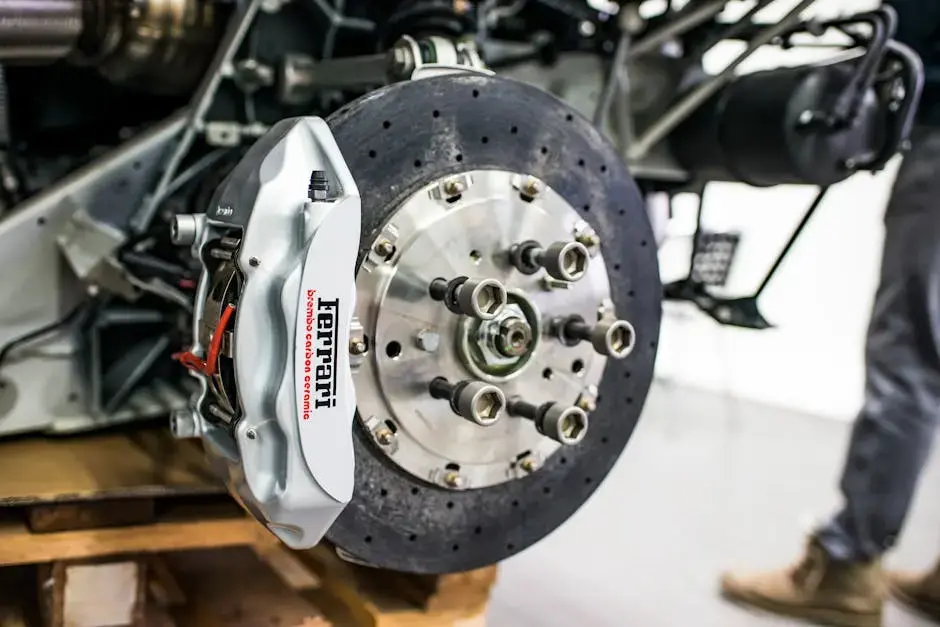Expert Tips on Brake Inspection and Maintenance
- keepitrunnin
- Jun 26
- 4 min read
Ensuring your vehicle's brakes are in top condition is crucial for safety on the road. Regular brake inspection and maintenance can help you avoid costly repairs and ensure a smooth driving experience. In this guide, we'll explore expert tips on how to inspect and maintain your brakes effectively.

Understanding Brake Components
Before diving into brake inspection and maintenance, it's essential to understand the key components of your braking system. This includes brake pads, rotors, calipers, and the brake fluid. Knowing their roles will help you identify potential issues early. The brake pads press against the rotors to create friction that slows the vehicle. The rotors, meanwhile, are discs connected to your wheels that the brake pads clamp down on. Calipers house the brake pads and piston, forcing the pads against the rotors. Finally, the brake fluid transfers force into pressure, amplifying the braking force applied by your foot.
Understanding these components can also help you distinguish between normal wear and more pressing issues. For example, brake pads are designed to wear down over time, but consistent squealing when braking might indicate they need replacement. Calipers and rotors, on the other hand, typically only need attention when a severe problem like grinding occurs or if the vehicle pulls to one side when braking. Similarly, maintaining the right levels and quality of brake fluid is crucial as it can wear out, affecting the entire system's performance.
Signs Your Brakes Need Attention
If you recognize signs such as squeaky brakes, a spongy brake pedal, or a burning smell while driving, it's time to give your brakes some attention. Squeaky brakes might simply need cleaning, but they can also indicate worn-out pads. A spongy brake pedal can be caused by air in the brake lines or low brake fluid. Lastly, a burning smell could mean overheated brakes, which is dangerous if left unattended.
You should also pay attention to any unusual vibrations when you apply the brakes, as this could be a sign that your rotors are warped. Warped rotors can cause uneven braking and possibly more serious issues if ignored. Another sign of brake trouble is a vehicle pulling to one side during braking, which often indicates a caliper is seizing. Such issues can lead to unsafe driving conditions and often require professional assessment. For constant maintenance queries, you might want to explore our services for comprehensive support.
Conducting a Visual Inspection
Conducting regular visual inspections of your braking system is a straightforward way to avoid potential problems. Start by examining the brake pads and rotors through the wheel spokes. Look for thin brake pads, less than a quarter of an inch thick, and any deep grooves or damage on the rotors, which may indicate they're warped or extremely worn.
Additionally, looking for any physical damage or corrosion in the brake lines and checking for cracks in the brake hoses and around the calipers is essential. During this inspection, also ensure that all components are securely mounted. Any signs of damage, rust or unusual wear might require immediate replacement. Regularly inspecting these components ensures your brakes are in optimal condition.
Maintaining Brake Pads and Rotors
Maintaining your brake pads and rotors is critical to a reliable braking system. Over time, brake pads wear down and need replacement. Generally, brake pads should be replaced when they reach about 3-4 millimeters in thickness. The process is relatively simple; however, if you are not comfortable, it's always best to have a professional handle the replacement.
In some cases, the rotors themselves may need resurfacing or replacement. If the surface of the rotor is uneven or severely grooved, it can lead to vibrations or diminished braking power. Rotors can be machined to provide a smooth surface for the new pads to contact, but if they are too thin due to wear or damage, replacement is necessary. Regular inspection of both pads and rotors helps in identifying issues early, prolonging their lifespan and ensuring safe operation.
Ensuring Optimal Brake Fluid Levels
Brake fluid is vital for efficient braking. It transmits the force you apply on the brake pedal to the brakes themselves, amplifying this force many times over. It's essential to keep the brake fluid at the correct level. When inspecting, make sure the fluid is between the minimum and maximum markings on the reservoir.
Brake fluid can absorb moisture from the air over time, which lowers its boiling point, reducing braking effectiveness. Therefore, a periodic brake fluid flush is recommended to remove old fluid and replace it with fresh fluid. This should typically be done every two to three years, but consult your vehicle's manual. If you're unsure of when to perform these checks or any other brake maintenance, consider scheduling regular professional inspections with our experts.
The Importance of Regular Professional Checks
While DIY inspections are helpful, having a professional assess your brakes regularly ensures any complex issues are addressed. Professionals not only have the expertise to solve more challenging problems, but they also have the tools to diagnose issues that might not be visible to the untrained eye. Regular professional brake evaluations help in maintaining overall vehicle safety and performance.
A professional brake check typically includes a detailed inspection of the entire braking system, including the brake pads, rotors, calipers, and fluid. During these inspections, professionals might also perform maintenance tasks such as bleeding your brakes to remove air from the hydraulic system or lubricating components to prevent squeaks and improve performance. For more details or to book an inspection, visit our website.
Keeping Your Brakes in Top Condition
By following these expert tips on brake inspection and maintenance, you'll be able to keep your vehicle's braking system in optimal condition. Regular checks and timely maintenance will not only enhance your safety but also prolong the life of your brakes, ensuring a smoother and more reliable driving experience. Visit our homepage for professional services and detailed guidance.











Comments